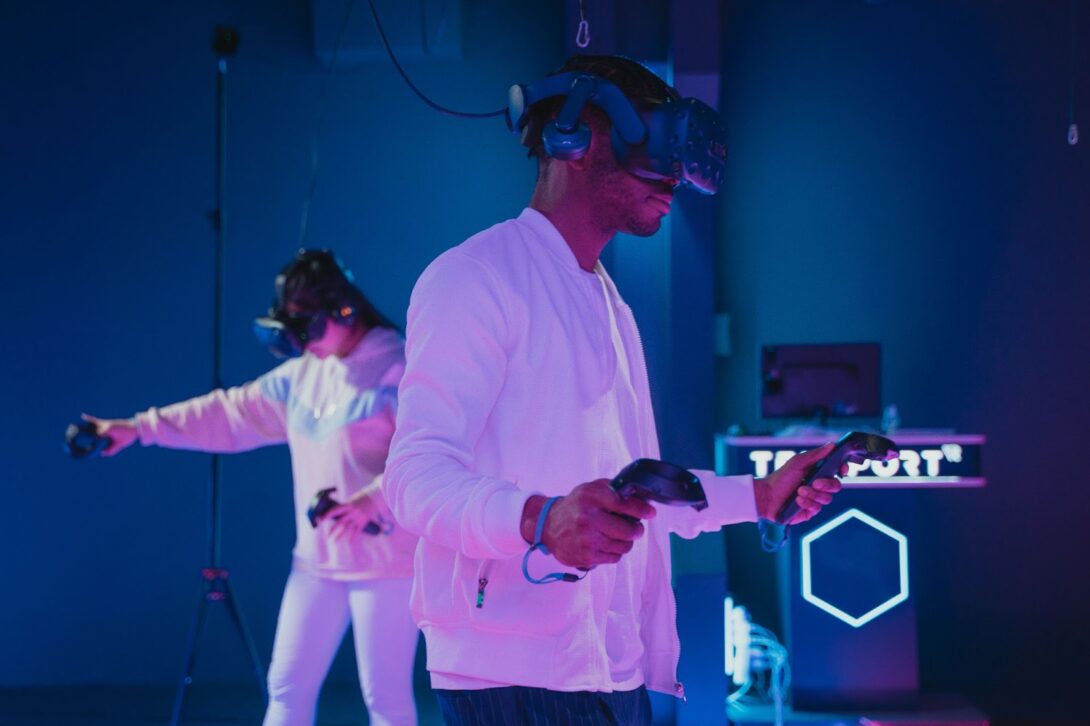The rise of Virtual Reality (VR) in gaming has been one of the most significant revolutions in the digital entertainment industry. From its earliest conceptions in works of science fiction to its current deployment in highly acclaimed gaming games, virtual reality has pushed the boundaries of what is possible in terms of immersion and involvement. As technology progresses, the player experience will be expanded by giving more immersive settings and completely immersive experiences.
The First Steps in Virtual Reality
Science fiction works such as the novel “Neuromancer” and the film “Tron” popularized the concept of virtual reality. These visualizations prompted technologists to investigate the technology’s possibilities. Various ideas and prototypes have arisen over the years in an attempt to make this futuristic vision a reality. Some examples of landmarks are:
- Sensorama: An arcade machine created by Morton Heilig in the 1960s that provided a multi-sensory experience for the user.
- Telesphere Mask: Also developed by Heilig, it was one of the first head-mounted displays.
- Sword of Damocles: Developed by Ivan Sutherland and Bob Sproull in 1968, it is considered the first fully functional virtual reality system.
- DataGlove: Created by VPL Research in the early 1980s, it allowed users to interact with virtual environments using hand gestures.
Each of these innovations represented a significant step on the journey towards making virtual reality an integral part of the user experience in technology and entertainment.
First concepts and prototypes
Stereopsis is the physiological basis of virtual reality. In 1838, Charles Wheatstone described this phenomena and built the first stereoscope. Morton Heilig later built two virtual reality gadgets in the 1960s: the Sensorama and the Telesphere Mask. The latter, which used two TV screens to produce a 3D picture, was quite similar to contemporary VR headsets.
Initial Challenges and Technical Limitations
The early virtual reality devices had a variety of difficulties, owing mostly to technological restrictions at the time. Furthermore, the expensive cost prohibited the technology from becoming widely available to the general people. Although there was a brief boom of interest in VR in the 1990s, many of the early devices failed to catch on in the consumer market owing to reasons such as poor graphics quality and exorbitant pricing.
Technological Advances and the Rise of VR
It wasn’t until the release of Palmer Luckey’s Oculus Rift prototype in 2012 that VR began to show promise for the consumer market. The Rift was significant not just for its unique design, but also for the fact that current GPUs began to accommodate VR’s high visual needs. This was followed by the release of additional high-quality VR headsets, such as the HTC Vive and PlayStation VR.
VR in Modern Games
The VR gaming sector has seen an exciting mix of independent and large AAA firms experimenting with the platform’s possibilities. While small games like “Superhot VR” and “Job Simulator” have provided creative and distinct experiences, AAA titles like “Skyrim VR”, “Resident Evil 7”, and “Half Life: Alyx” have proved the depth and immersion that VR can provide players. Valve’s “Half Life: Alyx” is frequently cited as the finest illustration of how VR can transform gaming narrative and gameplay.
Aside from these titles, a number of other games are setting the standard for what is possible in VR. Some of these games are as follows:
- “Beat Saber”: A rhythm game in which players use virtual sabers to cut blocks to the beat of music.
- “No Man’s Sky VR”: A virtual reality adaptation of the popular space exploration game that allows players to explore around a nearly endless cosmos.
- “The Elder Scrolls: Blades” : This game transports players to the land of Tamriel and provides first-person combat and exploration in a completely immersive setting.
- “Moss” is an action adventure that chronicles the adventures of a young mouse named Quill via battle, puzzle solving, and an intriguing story.
As VR technology advances, we should expect to see even more inventive titles and immersive experiences. These games not only challenge standard gameplay norms, but they also provide new methods for players to connect and engage with virtual environments. The possibilities are nearly limitless, and the future of VR in gaming is undeniably bright.

The Future of Virtual Reality in Games
VR is still evolving, with fresh technological improvements and a better knowledge of gamers’ requirements and expectations. With corporations like Meta (previously Facebook) investing extensively in VR, we may expect even further breakthroughs in VR technology and software in the future years. Furthermore, with the potential launch of the PlayStation VR2, the future of virtual reality in gaming is bright.
This text provides a detailed overview of the evolution of virtual reality in the context of computer games by merging information from the available publications with existing knowledge on the subject.



